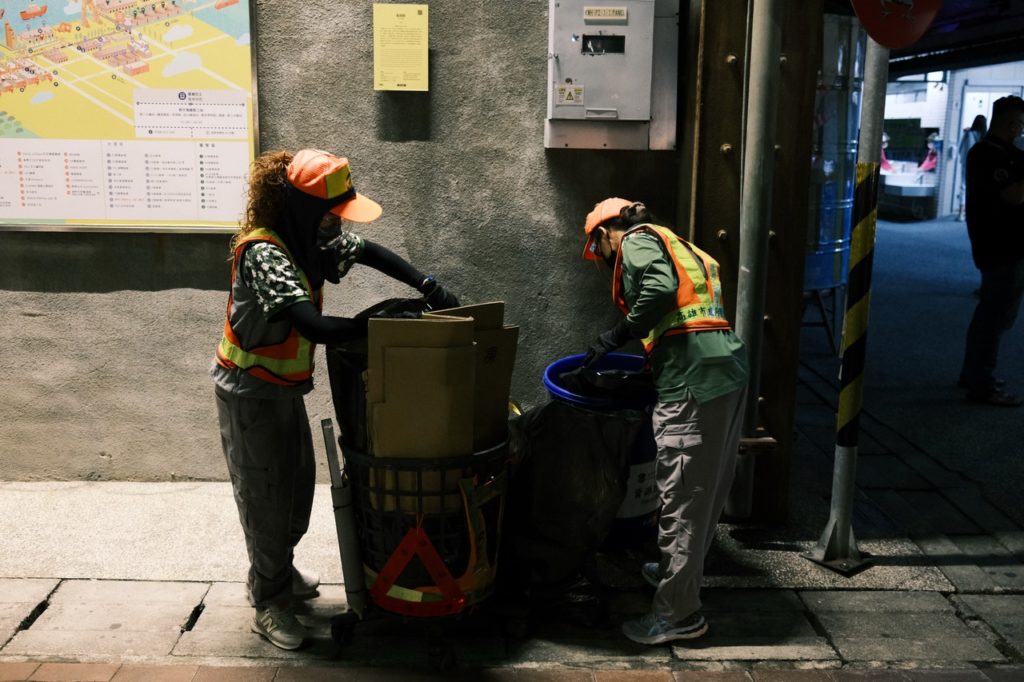
When were the first binmen? Technically, in England in the 14th century.
Trash is a tremendous problem in the world at the moment. Our refuse sites are full, we release dangerous chemicals when we burn trash, and the sea is full of plastic trash. It is easy to think that the problem of trash has always existed. There has always been trash, but it has never been the way it is today. Before the 19th century, most people’s trash would have consisted of food waste, bone, and the ash of fires. Things would have been fixed rather than tossed. If something could no longer be mended, as in broken pottery, it would be dumped outside the house and left for the archeologists to find thousands of years later. Almost every kind of trash that people had biodegraded. People lived in fairly small communities and trash didn’t build up to a significant level. That all changed after the Industrial Revolution.
The earliest landfill site that has been discovered was in Knossos, Crete, from about 3,000 BC. They were holes dug in the ground where people would bury their waste. As more people began to live in cities in Ancient Greece, the problem of dumping trash near houses began to be a problem and a law was passed in 500 BC demanding that people dump their trash at least one mile outside of the city. Whether or not this was followed, I have no idea. The Roman Empire continued with a similar law and trash had to be taken outside of the city to be buried. Trash mountains have been found and they mostly contain bones and broken pottery. Most containers would be recycled and used again. Trash in the cities appears to have been quite a problem because roads uncovered in Pompeii have raised stepping stones across them, presumably so that people wouldn’t have to step in the trash.
For the next fifteen hundred years, there were no changes. Trash was a personal problem and not a state problem. This is not unusual when you consider that there were no welfare programs, no pensions, and very few projects for the public. This is exemplified by a law passed in England in 1297, making it illegal for people to leave rubbish outside of their homes. It was still the individual’s responsibility, although enforced by the state. It seems that most people ignored the law until the middle of the next century, when the Black Death started sweeping through Europe. Nobody knew the cause, but rubbish and filth were considered a likely suspect. A group of workers known as “rakers” appeared in London in the mid-14th century. Their job was to rake up the trash, put it on a cart, and take it elsewhere. They were technically the world’s first garbagemen. Unfortunately, they were decimated by the Black Death.
In the 15th century, Paris started a street cleaning system. The city had become famous for its filth, so they hired thousands of street cleaners to move the waste. It seemed like a good idea at the time, but they just dumped the trash outside the city walls, merely moving the problem. Apparently, the mountains of trash were so high that people could just climb up them and hop over the city’s walls.
Everything had to change after the Industrial Revolution. This did three things that heavily affected waste. The first thing was that countries became urbanized. When people lived in small settlements in the country, throwing waste outside the house wasn’t a very big problem. When people were living in large and congested cities, it became a problem. The second thing was the type of trash changed. Metal items, such as cans, began to be mass-produced. The price of paper dropped, and paper started to form a large percentage of trash. The third thing was that there was a massive increase in the amount of coal that was burned.
The idea that the state should be in charge of waste removal was first suggested in 1751 in England by an economist called Cobyn Morris. He realized that the filth people were living in was becoming detrimental to their health. Nothing happened until the end of that century when somebody realized that money could be made by collecting the coal ash. The dust could be used to line roads, make bricks, and improve soil. The people who started collecting the ash were known as “dustmen”. In the UK, many people still refer to binmen / garbage collectors as dustmen.
In 1848, there was a huge cholera outbreak in London. This made people realize there was a need for sanitation. The Public Health Act was passed, and it recommended the removal of all refuse from houses, streets, and roads. A second law, in 1875, said that all houses must have a movable bin. People had to put all of their household waste in the one bin so that it could be collected weekly.
The introduction of this service created the need for some other services. The first were incineration plants. Something had to be done with the trash. The first incinerator plant was built in Nottingham, England, in 1874 but it had no way of keeping in the ash, which blew over the neighboring district. The second were garbage trucks. The first ones were simply open carts pulled by horses, but they were motorized in the early 20th century. The rear loading garbage truck was invented in America in 1921. This reduced the smell.
So, people in the countryside didn’t really have a problem with trash. The first real garbage collectors were introduced in England in the mid 14th century./ People living in cities had a problem with trash, but it didn’t become an insurmountable problem until after the Industrial Revolution. And this is what I learned today.
https://en.wikipedia.org/wiki/History_of_waste_management
https://www.roadrunnerwm.com/blog/history-of-garbage
https://www.fswaste.co.uk/the-history-of-waste-wagons
https://www.theguardian.com/notesandqueries/query/0,,-199543,00.html
https://www.commercialzone.com/a-brief-history-of-waste-management/
